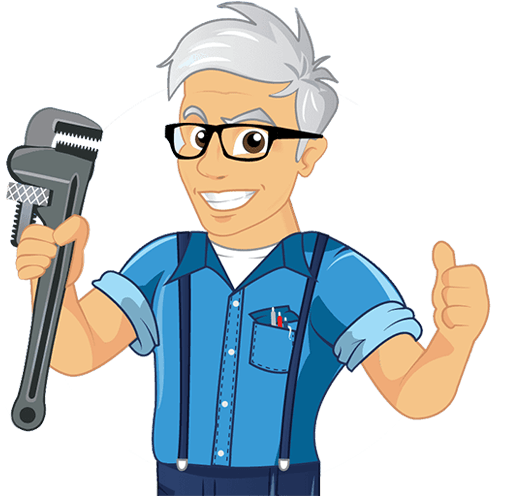Toilet Installation & Repair
If you toilet has plugged and you are unable to get it working, call us for help. There are a number of things that can make a blocked toilet ruin your day. We deal with toilet plumbing issues quite often and can get things cleared up very quickly.
Call now to set up an appointment.
Toilet Installation
When replacing an old toilet, the steps are pretty much the same as installing a new one. You start by prepping the floor after removing the old toilet.
Stuff a rag into the soil pipe to block sewer gas and prevent hardware from falling in. Check that the hole in the floor is large enough to accommodate the closet flange up to its collar. If the hole needs to be enlarged, trace around the flange's base with a pencil, then cut away the excess flooring with a jigsaw.
Don't cut any joists. Dry-fit the soil pipe into the closet bend. Place the flange over the soil pipe, then measure the gap between the bottom of the flange's collar and the finish floor. Remove the soil pipe and use a handsaw to trim it to the measurement in the previous step.
Remove burrs by scraping the cut edge with a utility knife. Dry-fit the flange to the soil pipe, and the soil pipe to the closet bend to ensure the flange's collar rests on the floor. This is the best way to install a toilet.
Inner Workings
A toilet has two main parts—the tank and the bowl. The bowl holds water and connects to the drain for disposing of waste water and waste. The tank, which sits up behind the bowl, contains reserve water for refilling the bowl plus the devices for flushing clean water into the bowl and refilling the tank.
One of these devices—called a ballcock—is connected to the water supply and controls delivery of water to the tank. When the tank’s water rapidly drops down into the bowl (upon a flush), the pressure causes the bowl’s waste water to go down the drain. The drop in water level is sensed by a float, ball, or pressure gauge, and this triggers the ballcock to refill the tank.
The Flapper Valve
When a conventional toilet is flushed, water from the tank rushes into the bowl through an orifice called the flush valve. Before you trip the lever, this valve is plugged with a rubber stopper, called a tank ball, flush valve seat ball, or the newer, more effective flapper or flapper ball.
The valve and the flapper together are called—not surprisingly—the flapper valve. Tripping the lever simply lifts the rubber flapper off the valve and…whoosh, the water flows into the toilet bowl.
A flush valve is 2 1/2 inches in diameter as is the ball-shaped part of the flapper. The flapper hinges onto the vertical overflow pipe that’s next to the valve, and a small chain connects the flapper to the trip lever. The advantage of a flapper over the earlier stoppers is that it doesn’t have as many parts to foul or get hung up so it’s less likely to let the tank “run” or leak into the bowl.
Install the Soil Pipe and Closet Flange
The next step to replace a toilet is to wipe PVC primer on the inside of the closet bend and on the outside of one end of the soil pipe. Apply PVC cement to those same surfaces and immediately twist the soil pipe into the closet bend.
Prime and apply cement to the free end of the soil pipe and the inside of the closet flange. Twist and press the flange onto the soil pipe until the collar is seated on the floor.
Rotate the collar until its slots are positioned to the right and left of the hole. (The closet bolts, which will be inserted into the slots, must line up parallel to the wall behind the tank.) Secure the collar to the floor with stainless steel screws long enough to bite into the subfloor.
Click here to read the full article.
The Common Toilet
A toilet is a piece of sanitary hardware used for the collection or disposal of human urine and feces. Toilets can be with or without flushing water (flush toilet or dry toilet). They can be set up for a sitting posture or for a squatting posture (squat toilet). Flush toilets are usually connected to a sewer system in urban areas and to septic tanks in isolated areas. Dry toilets are connected to a pit, removable container, composting chamber, or other storage and treatment device. Toilets are commonly made of ceramic (porcelain), concrete, plastic, or wood.
In private homes, the toilet, sink, bath, or shower may be in the same room. Another option is to have one room for body washing (bathroom) and another for the toilet and handwashing sink (toilet room). Public toilets consist of one or more toilets (and commonly urinals) which are available for use by the general public. Portable toilets or chemical toilets may be brought in for large and temporary gatherings.
The Toto Toilet
TOTO, is the world's largest toilet manufacturer. It was founded in 1917, and is known for developing the Washlet and derivative products. The company is based in Kitakyushu, Japan, and owns production facilities in nine countries. The name "Toto" is an abbreviation of the two Japanese words forming its full name, Tōyō Tōki (Oriental Ceramics).
When it comes to anything related to toilet repair, toilet replacement or installation, we will be happy to assist. Call any time for an appointment.






